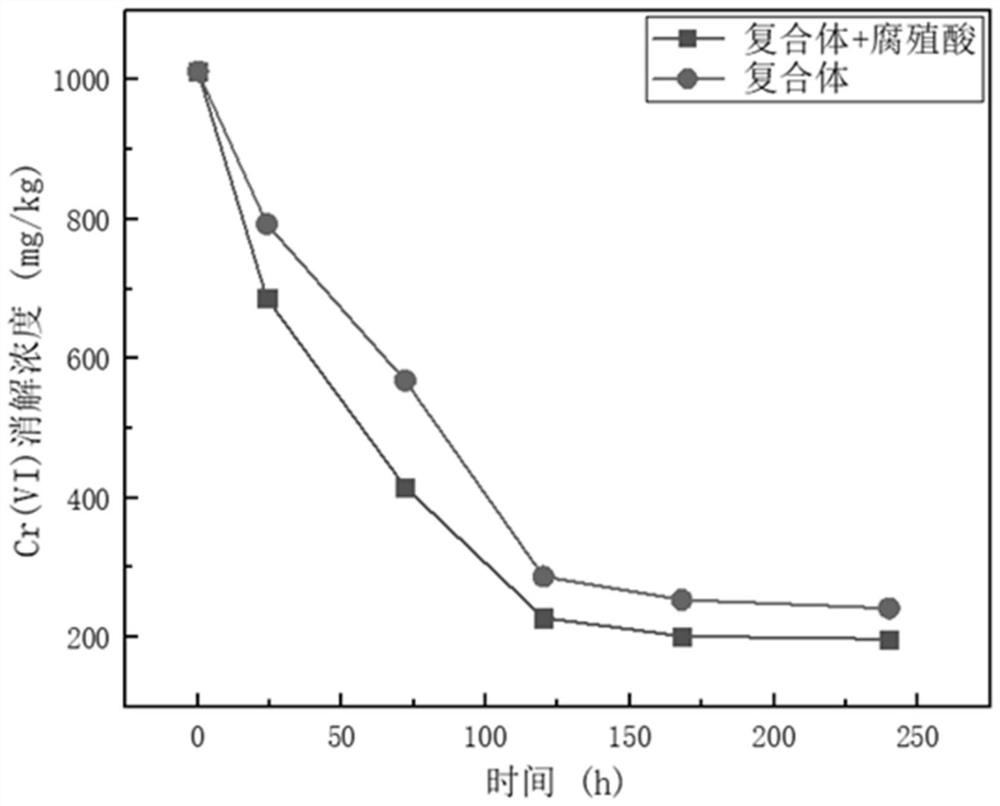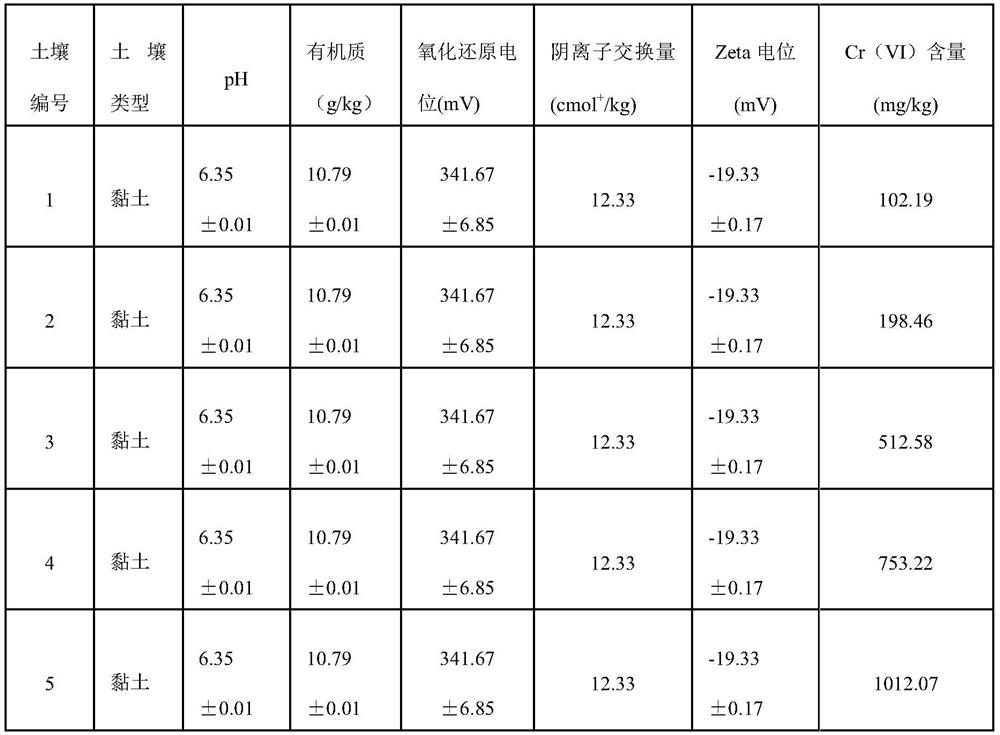Method for repairing chromium-contaminated soil through biochar-loaded hematite-shewanella loihica complex
A technology of photovoltaic Shewanella and biochar, applied in the field of soil remediation, can solve the problems of long repair time, difficult repair, slow water seepage, etc., and achieve the effect of shortening repair time, efficient repair effect, and accelerated transformation
- Summary
- Abstract
- Description
- Claims
- Application Information
AI Technical Summary
Problems solved by technology
Method used
Image
Examples
Embodiment 1
[0024] Obtain background soil samples with a depth of 20-100cm from a chromium-contaminated site, air-dry and sieve (60 mesh), measure soil properties, add potassium dichromate solutions of different concentrations, and naturally age for 2 months to obtain different pollution concentrations Table 1 shows the physical and chemical properties of soil contaminated with hexavalent chromium.
[0025] The Shewanella photovoltaics used in this example is Shewanella loihica, which was purchased from the Marine Microorganism Culture Collection (MCCC) with the number 1A13940. The yeast extract used, also known as yeast powder, was purchased from Oxoid with the item number LP0021. The biochar used was commercially purchased pine needle biochar with a pyrolysis temperature of 1000 °C.
[0026] BC@α-Fe 2 o 3 Preparation of @loihica complex: Weigh 25.25g, 12.625g, 5.05g, 2.525g and 1.2625g of Fe(NO 3 ) 3 9H 2 O into a 150mL beaker, add 60mL of ammonia water with an ammonia content of ...
Embodiment 2
[0035] Preparation of the complex: weigh 2.525gFe(NO 3 ) 3 9H 2 O into a 150mL beaker, add 60mL of ammonia water with an ammonia content of 9%, and add 5g of biochar into the beaker, stir magnetically for 30min, transfer to a 100mL hydrothermal reaction kettle, perform hydrothermal synthesis in an oven at 120°C for 15 hours, dry and grind to obtain Biochar and α-Fe 2 o 3 BC@α-Fe with a mass ratio of 10:1 2 o 3 . Add 25mL of Shewanella photovoltaica bacteria liquid to 75mL of LB medium (tryptone 10g / L, sodium chloride 10g / L, yeast extract 5g / L, the rest is water, pH value 7.0), and 5g BC @α-Fe 2 o 3 Add it into the culture medium and culture it in a constant temperature shaking incubator at 30°C and 180rpm for 24 hours to obtain BC@α-Fe 2 o 3 @loihica complex.
[0036] Remediation of hexavalent chromium-contaminated soil: The test was divided into seven groups: A, B, C, D, E, F, and G. Group A added only Shewanella photovoltaic bacteria solution, Group B added biocha...
Embodiment 3
[0042] Preparation of the complex: the preparation method of the complex in this example is the same as that in Example 1.
[0043] Restoration of soil contaminated with hexavalent chromium at different concentrations: the test is divided into five groups A, B, C, D, and E, using soils numbered 1 to 5 respectively, and other test conditions are the same as those of group F in Example 2. The soil total hexavalent chromium concentration was measured, and the test results obtained are shown in Table 3.
[0044] Table 3 Remediation effect of different concentrations of Cr(VI) contaminated soil
[0045]
PUM
| Property | Measurement | Unit |
|---|---|---|
| Pyrolysis temperature | aaaaa | aaaaa |
Abstract
Description
Claims
Application Information
 Login to View More
Login to View More - R&D
- Intellectual Property
- Life Sciences
- Materials
- Tech Scout
- Unparalleled Data Quality
- Higher Quality Content
- 60% Fewer Hallucinations
Browse by: Latest US Patents, China's latest patents, Technical Efficacy Thesaurus, Application Domain, Technology Topic, Popular Technical Reports.
© 2025 PatSnap. All rights reserved.Legal|Privacy policy|Modern Slavery Act Transparency Statement|Sitemap|About US| Contact US: help@patsnap.com



